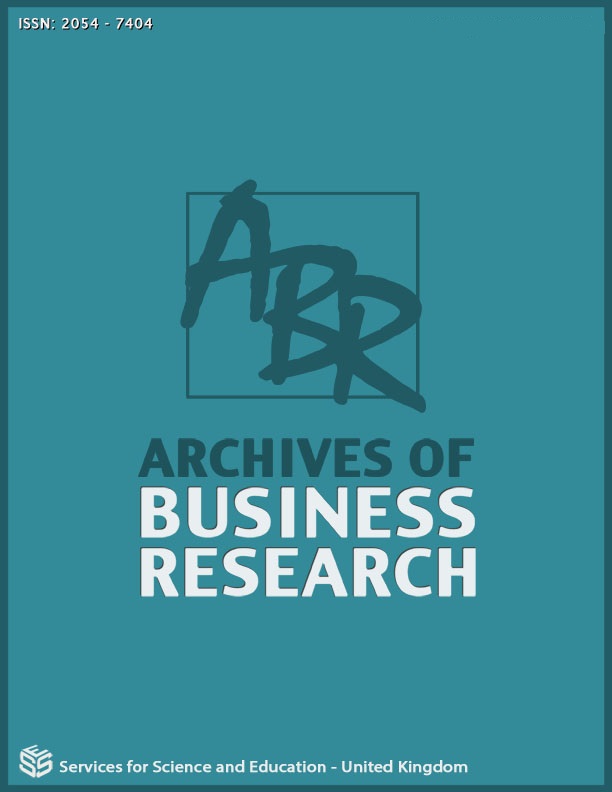The impact of internal marketing on 'green' management of intellectual capital
DOI:
https://doi.org/10.14738/abr.96.10391Keywords:
internal marketing, “green” intellectual capital, knowledge capital, “green” employees, “green” organisational culture, “green” reputation.Abstract
The purpose of this paper is to explore the relationship between internal marketing and “green” management of intellectual capital by testing correlations between internal marketing and knowledge capital, the development of “green” employees, “green” organisational culture and the “green” reputation of the organization.
A questionnaire of 20 items was sent by e-mail via Google docs, to firms that employ more than 250 employees and have received awards for their working environment. Data collection lasted from July to November of 2020 and 609 questionnaires were collected.
Results strongly confirmed the correlations between facilitation of flow information and maintenance of knowledge capital, informal communication and the development of “green” employees, participatory and supportive character of internal marketing programmes and the adoption of a “green” culture and internal customers’ satisfaction and the development of the organization’s “green” reputation, thus indicating a new perspective in a macro-level management.
Managers need to adopt a contemporary perspective of managing the intangible assets of the organization. Integration of internal marketing practices can foster the maintenance of knowledge capital, the development of “green” employees and achieve the reinforcement of “green” organisational culture and the reputation of the organization.
There is no previous research attempting to explore how the “green” management of specific elements of intellectual capital are correlated with internal marketing.
Downloads
Published
How to Cite
Issue
Section
License
Copyright (c) 2021 Christina Arfara

This work is licensed under a Creative Commons Attribution 4.0 International License.






